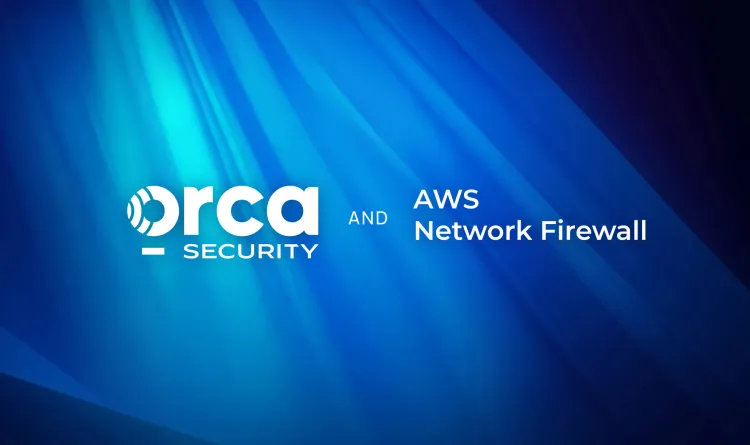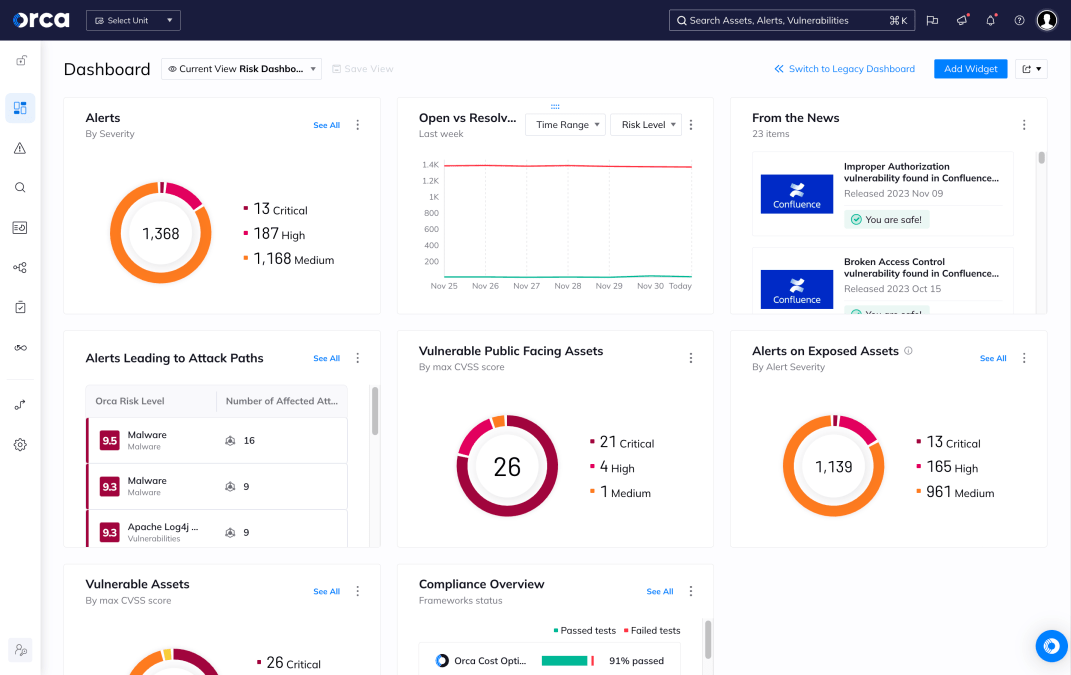Orca welcomes the Department of Defense (DoD) significant step toward securing its cloud-based operations with the release of Cloud Security Playbook (available here via PDF). Government agencies must prioritize securing cloud-based operations. The DoD’s Cloud Security Playbook emphasizes the importance of this need.
The Playbook, recently cleared for public release on February 26th, culminates various policies and directives into an easily accessible format and dives deep into advanced cloud security practices tailored for DoD components. It addresses critical areas such as securing containers and microservices, protecting DevSecOps pipelines, mitigating third-party risks, and safeguarding artificial intelligence (AI) systems and application programming interfaces (APIs).
For government departments and agencies, or any organization navigating the complexities of cloud adoption, Orca delivers the platform of the future to secure the cloud. The Orca Cloud Security Platform perfectly aligns with DoD’s rigorous requirements and forward-thinking approach. Let’s examine the Playbook in detail to see how Orca supports it.
Breaking Down the DoD’s Cloud Security Playbook
The Playbook is broken into two different volumes:
- Volume 1: Focuses on a risk-driven approach. It’s not just about checking boxes; it’s about understanding and tackling real risks.
- Volume 2: Gets practical. It details the technical and procedural steps for a resilient cloud. Think continuous monitoring, rapid incident response, and seamless integration.
As outlined, robust cloud security requires a multi-faceted approach. Organizations should concentrate on the following areas:
- Comprehensive, continuous cloud visibility: Establish and sustain comprehensive visibility across your cloud estate to create the conditions for effective detection, prioritization, and remediation. Implement real-time monitoring to enable proactive detection of anomalies and potential breaches and accelerate incident response.
- Risk prioritization and remediation: Instead of relying on generic checklists, prioritize the remediation of risks based on their potential impact on operations.
- Zero trust + defense-in-depth: Adopt a layered defense strategy with comprehensive and unified security measures. Continuously authenticate and authorize all users and devices.
- Cloud-native integration: Utilize security solutions designed specifically for cloud providers (AWS, Azure, GCP). Leverage automation and native integrations to enhance the speed and performance of teams in addressing risks.
Additional technical considerations
- Container and microservices security: Ensure the integrity of containerized workloads and microservices.
- DevSecOps pipeline protection: Embed security into development workflows to catch vulnerabilities and other risks early.
- Third-party risk management: Address risks introduced by external vendors and supply chain dependencies.
- AI and API Security: Safeguard emerging technologies like AI systems and APIs from exploitation.

The DoD and other security conscious organizations can use the Playbook to ensure compliance and achieve robust security. The Orca Platform supports the Playbook’s priorities by providing comprehensive visibility and capabilities that cover its key areas and technical considerations.
Why Orca Security excels for government and security conscious organizations
The Orca Cloud Security Platform is a true CNAPP, purpose-built to secure cloud-native environments with unmatched efficiency and depth. Here’s how it addresses the Playbook’s key tenets and empowers government agencies:

1. Comprehensive container and microservices protection
The Playbook underscores the importance of securing containers and microservices, which are prone to misconfigurations, vulnerabilities, and other risks. Orca’s agentless SideScanning™ technology provides full visibility into container images, Kubernetes clusters, and microservices without disrupting operations. It identifies risks like exposed secrets, outdated libraries, and insecure configurations, enabling agencies to harden these assets in line with DoD standards.
2. Seamless DevSecOps integration
Volume 2 emphasizes securing DevSecOps pipelines to catch vulnerabilities early in alignment with critical pre-deployment measures, commonly referred to as Application Security. Orca integrates directly into CI/CD workflows, scanning git repositories, code, container images, infrastructure-as-code (IaC) templates, and other artifacts for issues before deployment—with guardrail policies to block risky builds. Orca also traces risks in cloud assets to their code origins and enables teams to remediate issues at their source from cloud to development environments. This proactive approach aligns with the Playbook’s call for continuous security monitoring, reducing the risk and costs associated with exploitable flaws reaching mission-critical systems.
3. Robust third-party risk mitigation
As government agencies increasingly depend on third-party cloud services, supply chain risk management is essential, and the Orca Platform offers the optimal solution. The Platform provides unified visibility across multi-cloud environments (AWS, Azure, Google Cloud) and third-party integrations, detecting vulnerabilities, misconfigurations, and other risks that could be exploited through external dependencies. This capability allows agencies to maintain control over their extended ecosystem, even in a shared responsibility model like cloud environments.
4. AI and API Security made simple
As AI and APIs become integral to government operations, the Playbook stresses their protection. The Orca Platform gives you a complete view of API endpoints and the AI models deployed in your environment, identifying insecure configurations, excessive permissions, sensitive data exposure, and other risks. This ensures compliance with DoD security requirements while supporting the safe adoption of cutting-edge technologies.
5. Compliance and mission readiness
The Playbook is rooted in federal standards like FedRAMP and NIST, which are non-negotiable for government agencies. With more than 200 out-of-the-box frameworks, industry standards, and best practices, Orca simplifies compliance by automatically displaying your up-to-date status, mapping security findings to relevant frameworks, and offering flexible and automated reporting options. Its risk prioritization engine—driven by contextual analysis—helps Mission Owners focus on high-impact risks and threats, ensuring resources are allocated efficiently to maintain operational readiness.
6. High security deployment options
For further information about deployment options for environments that require additional security beyond FedRAMP Moderate authorization, please contact our Federal sales team. Orca Security offers these deployment options and is FedRAMP Moderate Authorized.
Government agencies face unique security challenges with budget constraints, rapidly evolving threats, and bespoke systems. The Orca Cloud Security Platform addresses these challenges with an agentless-first, scalable approach that provides a unified, comprehensive solution for multi-cloud security.
Learn More
Interested in discovering the benefits of the Orca Cloud Security Platform? Contact Orca Security’s government team today to learn how we can help you thrive securely in the cloud at [email protected].
About the Orca Cloud Security Platform
Orca offers a unified and comprehensive cloud security platform that identifies, prioritizes, and remediates security risks and compliance issues across AWS, Azure, Google Cloud, Oracle Cloud, Alibaba Cloud, and Kubernetes. The Orca Cloud Security Platform leverages Orca’s patented SideScanning™ Technology to provide complete coverage and comprehensive risk detection.







